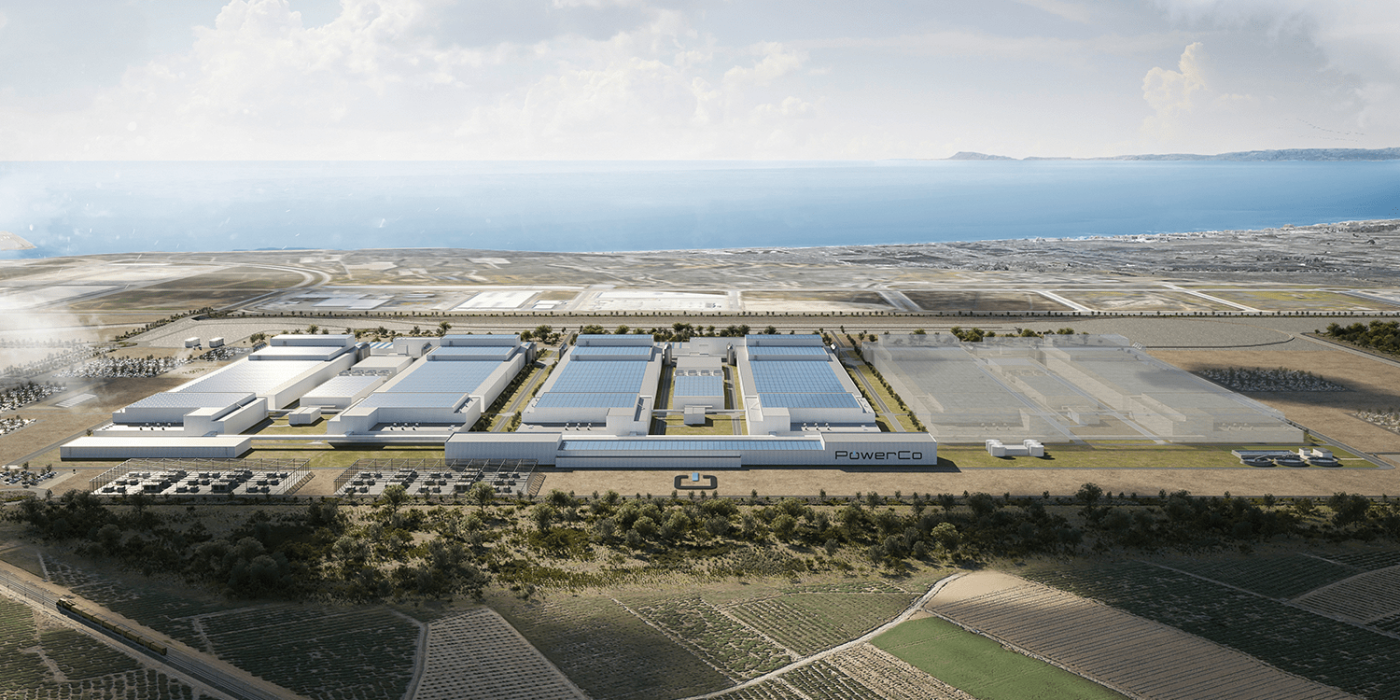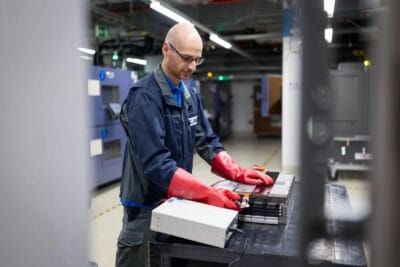Spain subsidises Stellantis and PowerCo battery plants
Car manufacturer Stellantis is still deciding whether to build a battery complex next to its car plant in Figuerelas near Zaragoza in Spain, in close cooperation with the Chinese cell manufacturer CATL. According to Reuters, Stellantis has confirmed that the project would create around 3,000 jobs and require an investment of almost 2.5 billion euros. There is no information yet on the targeted production capacity.
The Spanish Ministry of Industry is standing behind the project with a promised a grant of 133 million euros from the third round of the PERTE funding programme. This new sum would bring the Spanish government’s latest aid to Stellantis to almost 300 million euros, including 272 million euros in grants and 26 million euros in loans.
Spanish media have been writing about the establishment of the cell plant for months, writing that Stellantis has been looking for a location for its fourth European battery gigafactory for some time – in addition to the three factories planned by the Automotive Cells Company (ACC) joint venture in France, Germany and Italy. Spain – as has now been confirmed – had the best chances for this plant, partly because Stellantis operates three vehicle plants in the country (Madrid, Vigo and Zaragoza). At the end of November 2023, there were already initial rumours about Zaragoza as the preferred location.
Sources say that Stellantis and CATL could be planning to operate the battery factory together to produce LFP cells. That fits with Stellantis’s official announcement at the end of November 2023 of a partnership with CATL for LFP batteries in Europe. While two other partners are on board with ACC, this fourth battery factory is said to be a 50:50 joint venture, although this has not yet been fully confirmed.
The second battery project for which the Spanish Ministry of Industry is providing extra funding is already in the construction phase. The state subsidies from the PERTE programme for the PowerCo battery factory in Sagunt will be increased from 98 million to 152 million euros.
Volkswagen officially gave the go-ahead for constructing the battery cell factory near Valencia in spring 2023. Its construction will be managed by Volkswagen’s battery subsidiary PowerCo. The site’s annual production capacity for manufacturing the ‘unified cell’ will be 40 gigawatt-hours, creating more than 3,000 direct jobs when production starts in 2026. At the start of construction, Volkswagen also mentioned for the first time that the production facility could be expanded to 60 GWh and that up to 30,000 indirect jobs would be created at suppliers and partners in Spain. It currently seems unlikely that this expansion is still being pursued.
The cell factory will be located in Sagunt – near Valencia, on an area of around 130 hectares. According to Volkswagen, the PowerCo factory will be built adjacent to the planned supplier park over a total area of 200 hectares. The Volkswagen subsidiary intends to supply the cell factory entirely with renewable energy from wind power and a 250-hectare solar park that is being built near the plant. Last year, Volkswagen also announced that the raw material cycle would be a closed loop within cell factory site, meaning that capacities for recycling and reprocessing are also to be created on-site.
Since its foundation in July 2022, PowerCo has identified three locations for cell factories: Salzgitter, Valencia and St. Thomas in Ontario, Canada. The Valencia plant will close an important gap in the supply chain for electric car production. In future, the plant will supply the vehicle plants in Martorell and Pamplona, among others, with unified cells.
Spain’s Minister of Industry, Jordi Hereu, believes that the entire industry and the public agree that there is no turning back when it comes to the electrification of the automotive industry: “This is why we are dedicating a large part of the funds to the automotive sector, with the largest industrial programme in our history to support the automotive industry.” Against this backdrop, the Minister has already announced the fourth call for funding under the PERTE programme. It will be published before the end of the year. According to Hereu, the budget for the new round will amount to 1.25 million euros.
The third PERTE funding (‘Strategic Project for Economic Recovery and Transformation.’) round is currently underway. The government has endowed PERTE with 1.2 billion euros, which has also funded the two projects outlined above.
reuters.com, mintur.gob.es (in Spanish)





0 Comments